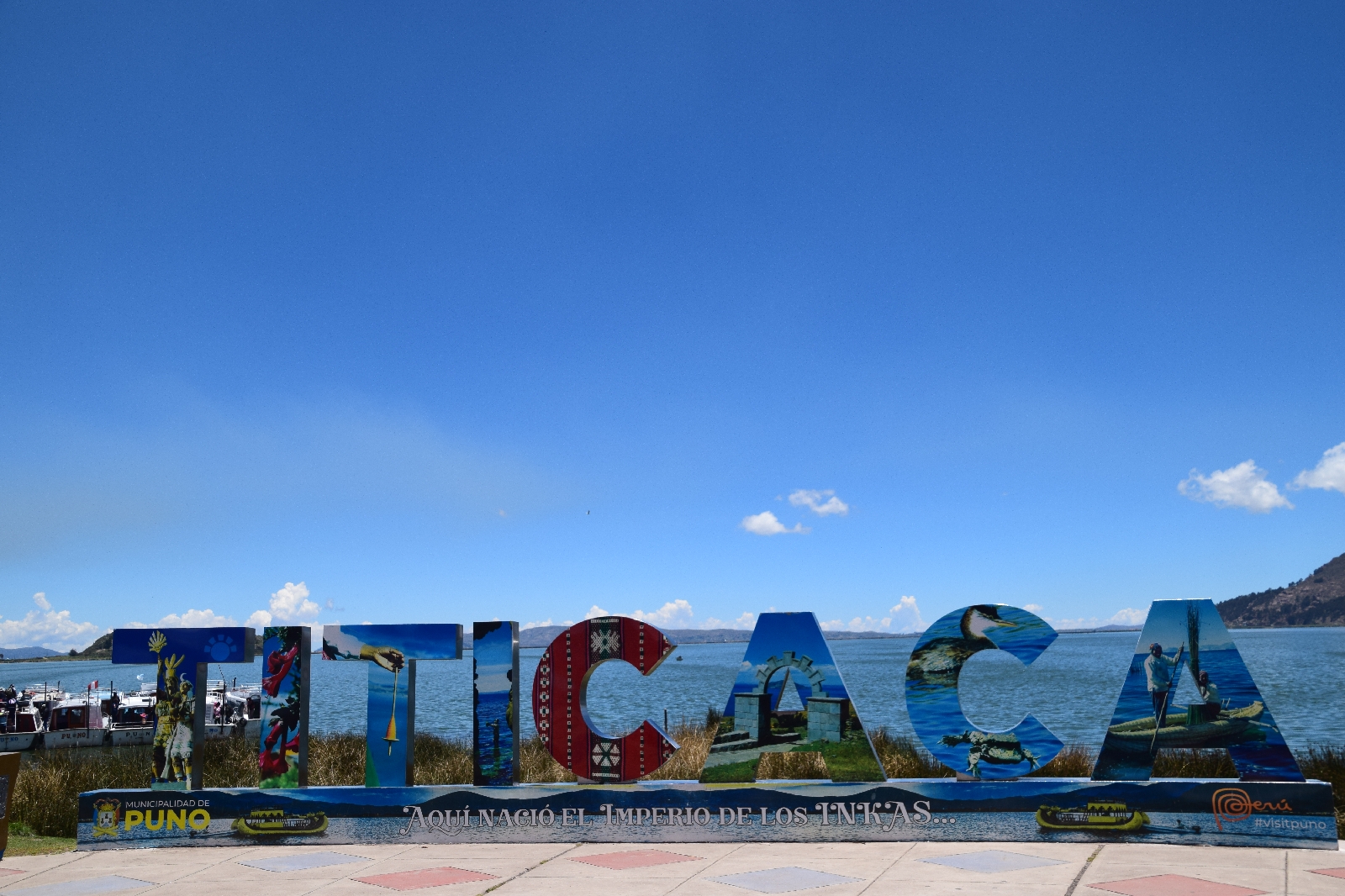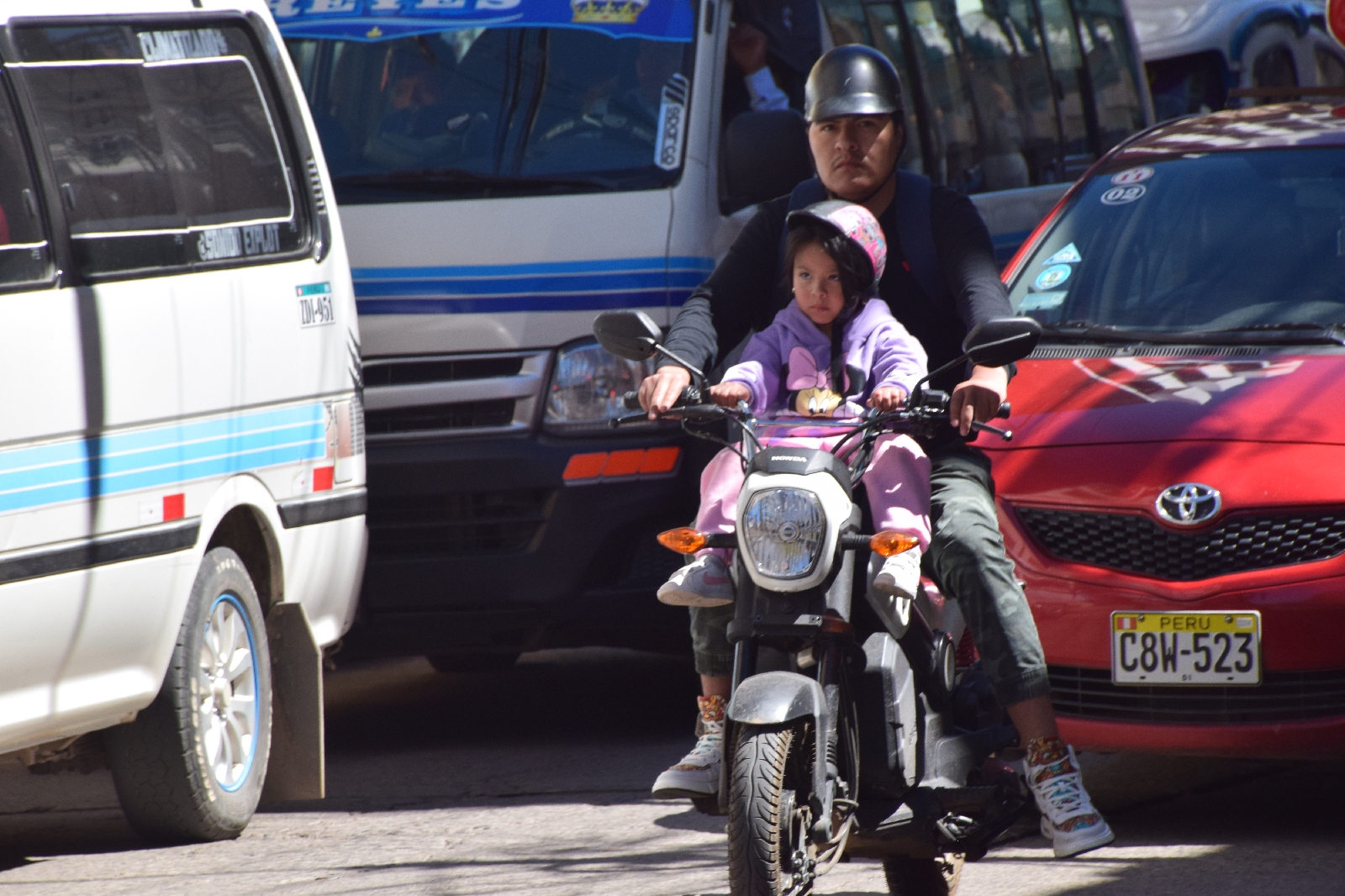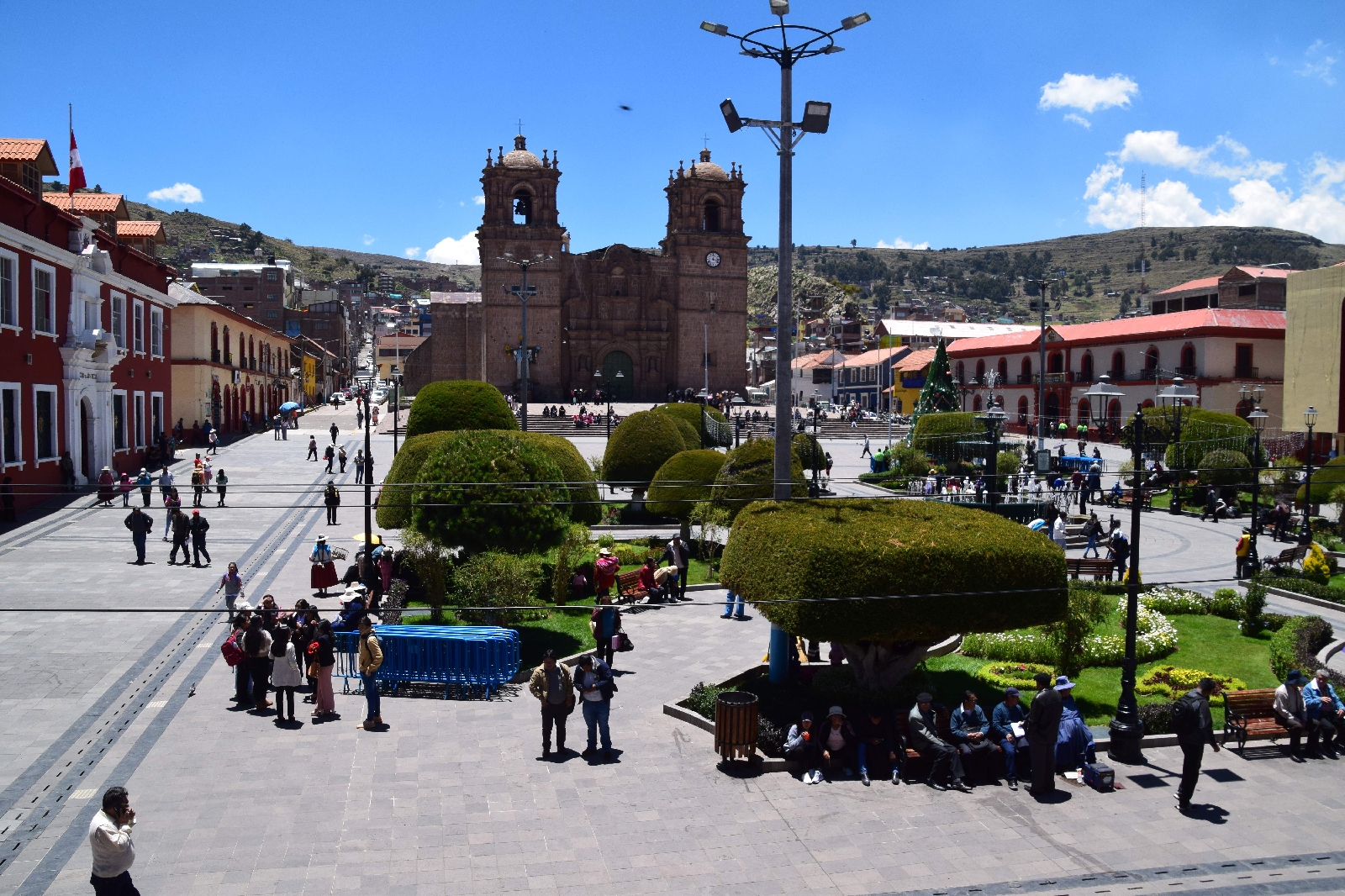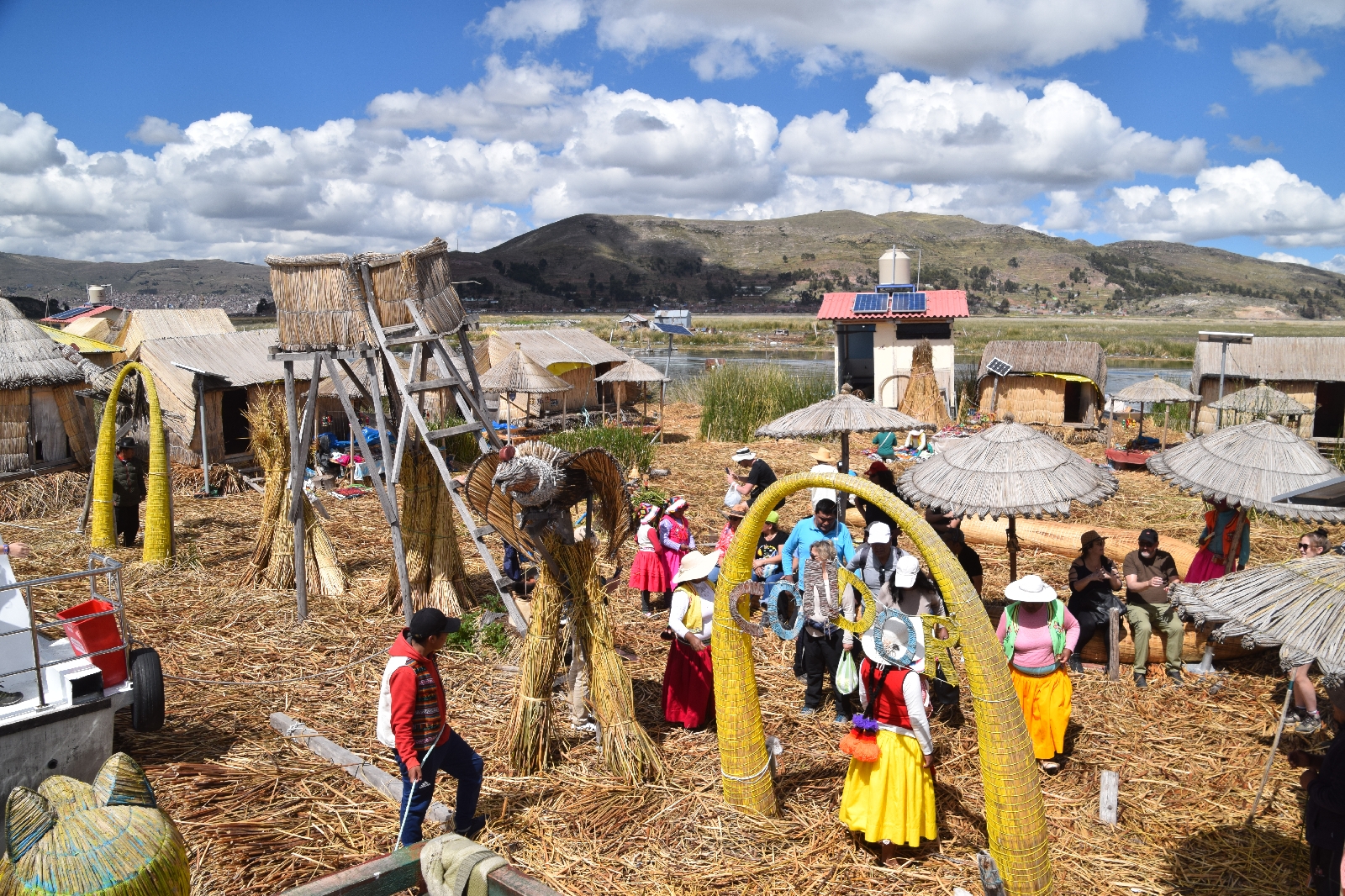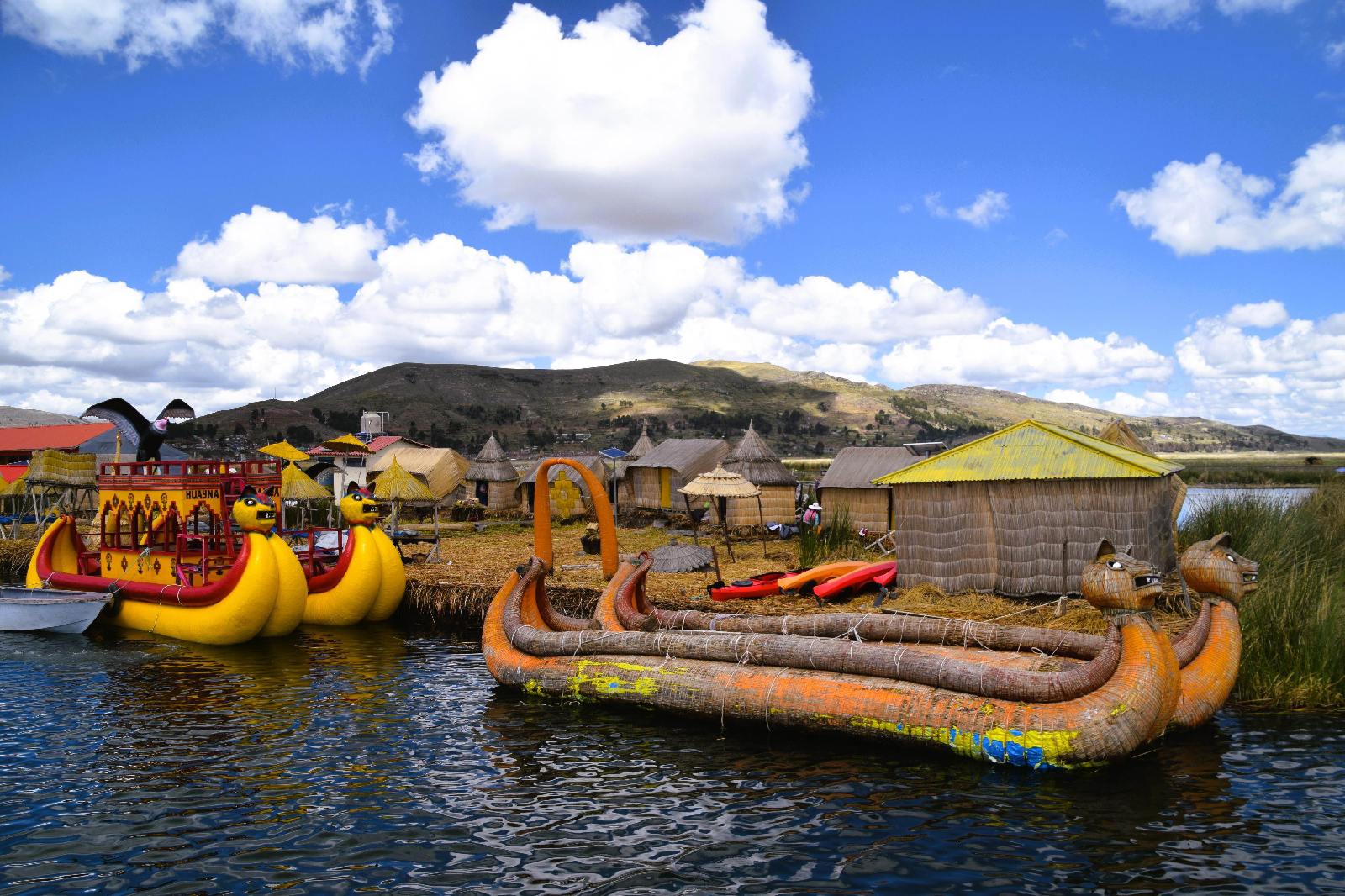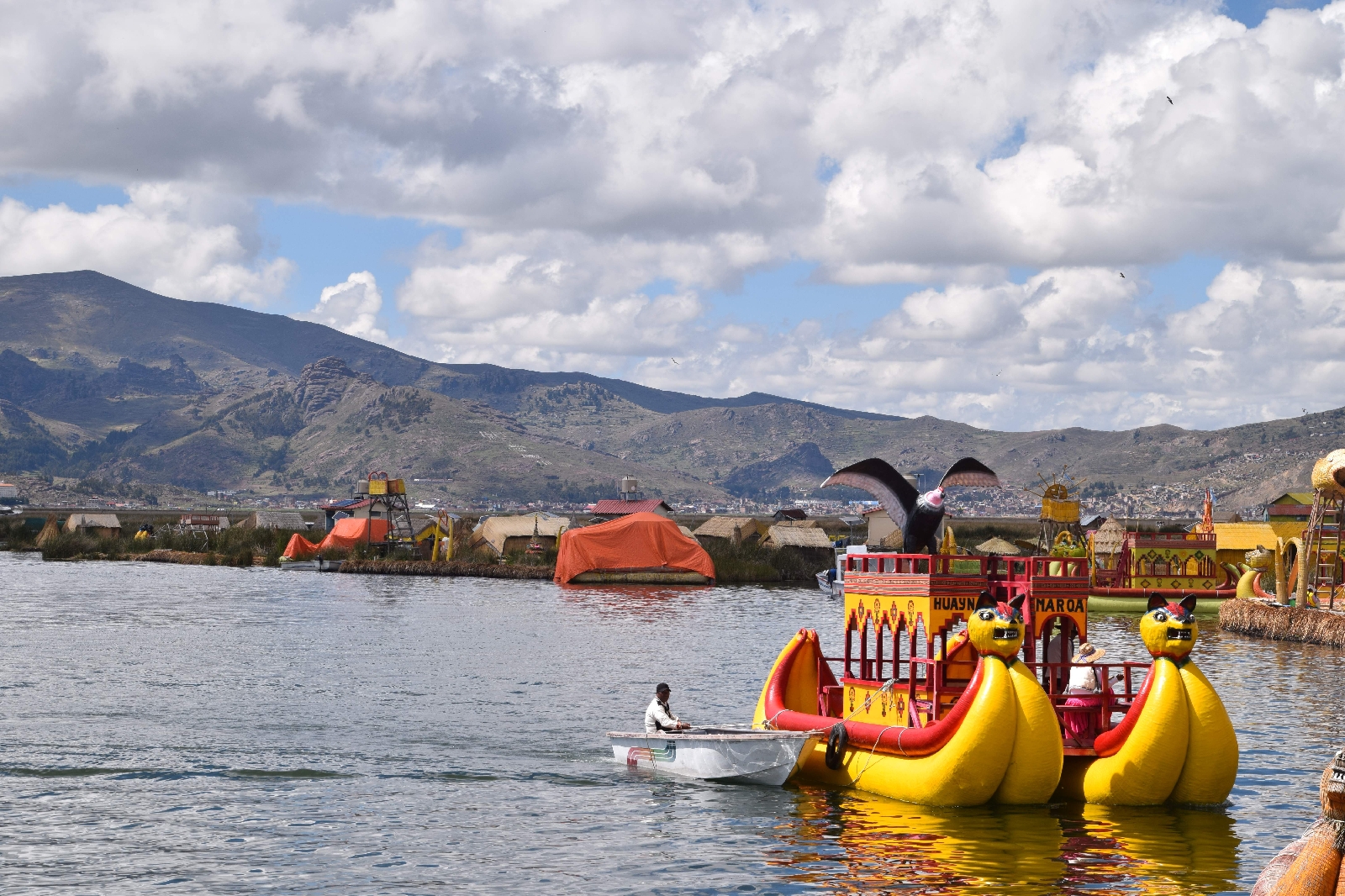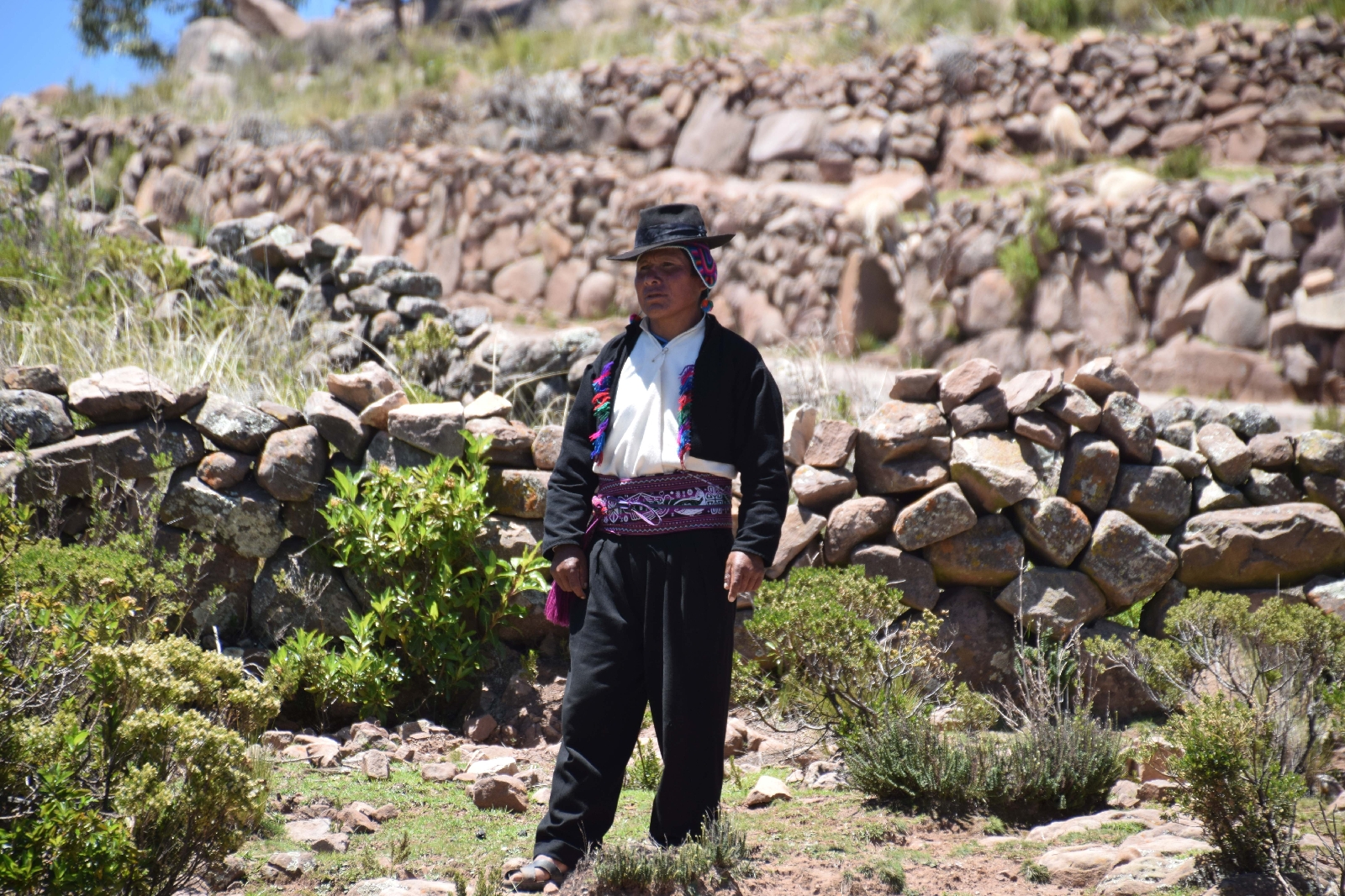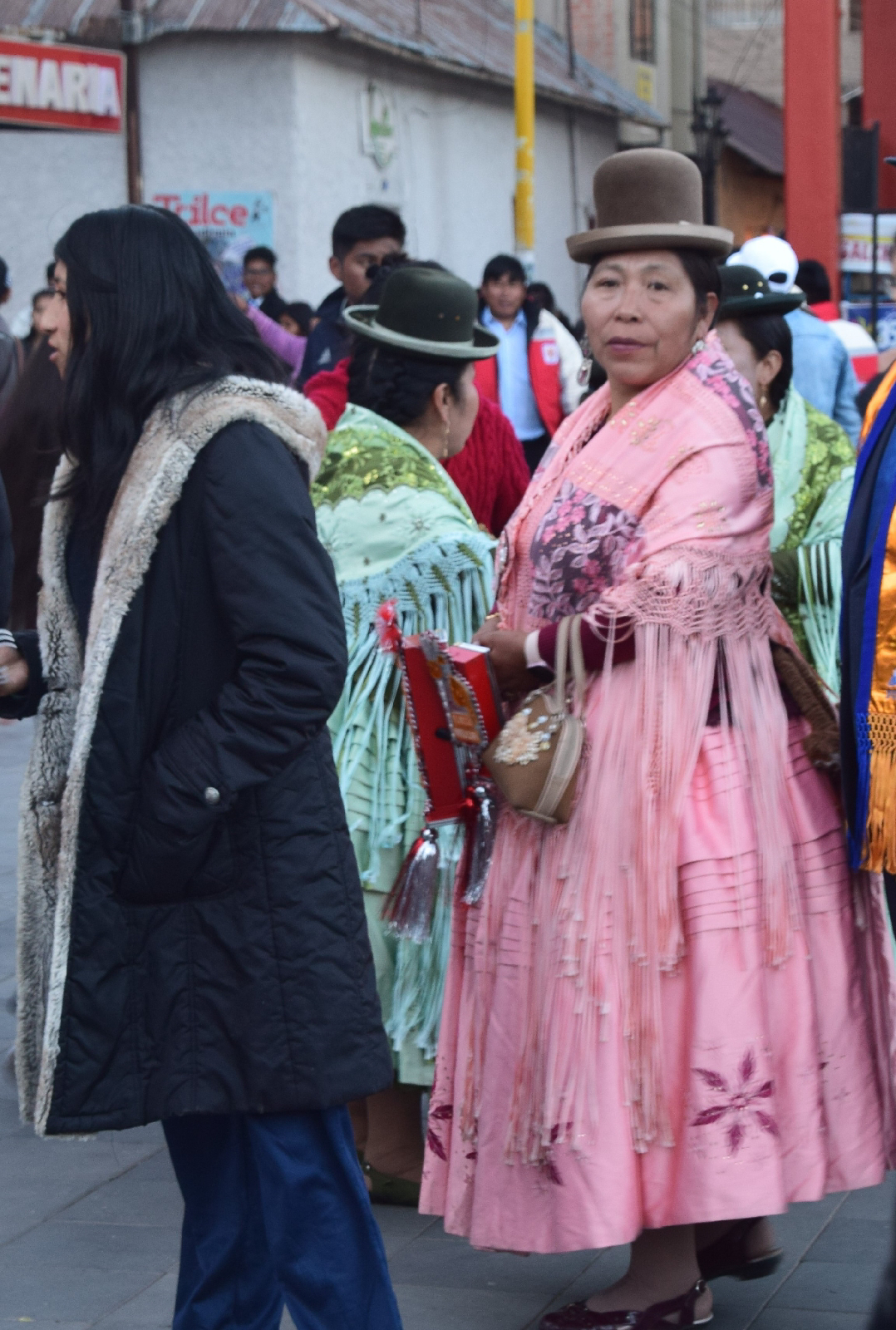We arrived in Puno. We are writing this a few days later. Puno is on the shores of Lake Titicaca and is the base for visiting it. Lake Titicaca is the highest navigable lake in the world at just over 3,800m and the second largest lake in South America. Puno sits on a shallow bay on the Peruvian, as opposed Bolivian, part of the lake. But you don't come to Lake Titicaca to admire its elevation or size; at least the vast majority of tourists don't. You come here to see the floating islands and it is in the bay on which Puno sits that the reeds grow that make the floating islands. We are clearly in South America and particularly Peru now.
The Uros people live on the floating islands but more about that later. When the Incas conquered the areas the Uros people weren't that keen on the ritual beheading and sacrificing the Incas imposed on people they conquered, so they moved off the land onto floating islands in the lake made from reeds to distance themselves from the Incas. There was an abundant supply of fish and clearly plenty of fresh water and maybe they weren't too strict on their five a day. There are currently about 2,000 Uros on the islands. The islands are made of big lumps of entangled reef root fixed together and then covered with alternating layers of cut reed. They are anchored to the lake bed with ropes and stones and are clearly floating because you can feel them move, despite their size, when you jump up and down. The islands vary in size from about 500m2 to 1,000m2 and have reed huts for the inhabitants to live in. Each island lasts about 40 years and takes about 18 months to build. All this from our Guide.
To get to the islands you take a tourist boat from Puno; one of those flat bottomed ones that takes about 30 people that you often see on European rivers. Flat bottomed because the bay is only 2m deep. Were the Incas really put off by 2m of water? When approaching the island community, you see some relatively large constructions that are the school and medical facility made of timber, metal and even glass. You also see similar constructions made of the same materials that are clearly habitations. The guide did not mention these. Each tourist boat moors up to a different island. After all the islands are not, individually, very big. Ours was relatively small and called Condor Isla. We met the fifteen people, from five families, that lived on the island. Each had their own abode which was a single storey, single room reed hut. They has some PV panels and some unfinished, due to Government corruption, sanitation.
We were not 100% sure within ourselves about whether we should be visiting the Uros even if we did accept that we were Tourists and that was what Tourists did. When you arrive you are greeted by the inhabitants. There were plenty of people in Puno in what you would term, 'Peruvian dress'. Here, on the island, the colours were a tad brighter. The islands aren't big so it is only one tourist boat per island. Then there is the welcome song - not sure about this. You are shown inside a reed hut and can buy some souvenirs that are readily to hand and so cheap that they can't even have been made in China. You can then pay, we did, to go across the bay in a reed canoe (of sorts).
Our guide was very sincere but there were a number of questions that troubled us nonetheless. Did the people we met really stay on the island after we, the tourists had left in the afternoon? Did they really sleep four to the bed that occupied the vast majority of space in the hut or did they move to the more substantial constructions we saw on our way out there? They rely substantially on tourism. Would we as tourists have gone to see them if we knew that they really lived in the more substantially constructed shelters? If they really do live in the reed huts are we as tourists forcing them to do so? We remain troubled. It is certain that COVID hit them very hard and we were encouraged a number of times to spread the propaganda. We didn't ask the awkward questions to the guide. It didn't seem appropriate. What we didn't like was the welcome song and the extra boat ride. We had expected a small canoe not the equivalent of a double decker bus, of which ours seemed to be one of a 100 identical vessels, occasionally pushed by a motor boat. We also didn't like the children getting on this bus and singing to their captive audience and then asking for money. What we did like is then seeing the children spending any money they had gleaned from us on cakes. We also appreciated the historical and technical explanations of the islands. All we can do is wish the Uros people all the best. We have visited them, we have given them some money and we now have our opinions.
After the Uros we visited Taquile which is a real island about an hour and a half away on the tourist boat. Taquile is home to about 2,500 people who are fundamentally farmers with their income boosted by tourism. This felt more real. There had been investment in creating a path - there are no wheels on the island and also investment in six tourist restaurants in one of which we had lunch. Apart from the local dance that was put on for us we were OK with this part of the visit. We even wondered what it would have been like to spend a couple of nights there, but we did in the end catch the boat back to Puno.
Puno was lively. It was especially lively in the square behind our hotel and we didn't know why. We asked at the hotel and the response was that it was the start of 'Candelaria' which is a celebration of Jesus being taken to the temple for the first time. We think it's a Puno thing; at least we think that Puno makes the biggest deal of it. Candelaria is actually at the beginning of February but they have to warm up for it and it just so happened that our first night in Puno coincided with the start of the warming up. The Candelaria itself in February seems to be a battle of the bands and dancers of 100 communities from around Puno. Its a BIG thing. The start of the Candelaria had a few of these bands and dancers showing off their moves. But also lots of people in their Sunday finery and loads and loads of people bringing baby Jesus dolls in cribs presumably to be blessed in the church - there was a queue to go into the church and everybody brought their dolls back out. We found this mix of Catholic Cristianity and local Peruvian custom very intriguing.
